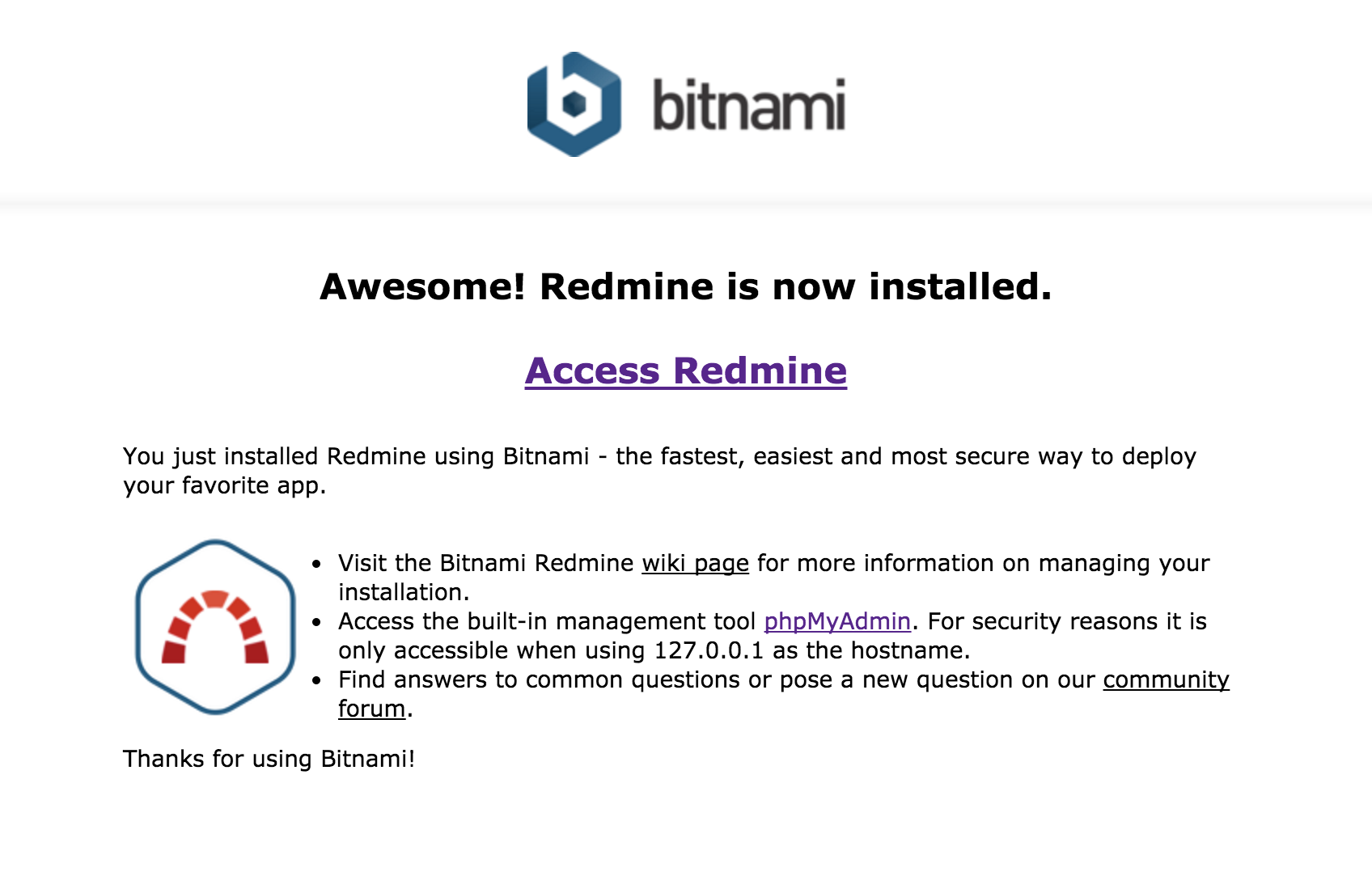
Bitnami redmine letsencrypt how to#
To learn more about how to generate and install a Let’s Encrypt certificate for a Bitnami application, refer to this tutorial. A markdown template is provided by default to open new issues, with certain information requested to help us prioritize and respond as soon as possible. If you need to get a resolution on issues or want to send us your feedback, please open an issue. Looking to learn more or have any questions? Check out the new Bitnami GitHub repository for virtual machines. Where 21:40 is the new randomized time - you will probably see a different value - at which point the renewal will happen every day. Run the following commands to install the Lego client. To use it, follow these steps: Log in to the server console as the bitnami user. Once executed, the command should show something like this:Ĥ0 21 * * * sudo /opt/bitnami/letsencrypt/lego. The Lego client simplifies the process of Let’s Encrypt certificate generation. Ĥ0 21 * * * sudo /opt/bitnami/letsencrypt/lego … from 0:00:Ġ 0 * * * sudo /opt/bitnami/letsencrypt/lego.
Bitnami redmine letsencrypt update#
Manually update the lego version by running the following command:.$ curl -L | tar xz -C /opt/bitnami/letsencrypt l This will also randomize the times in the crontab and add the user-agent to the crontab.


The tool will request to be updated - press “Yes”. I am currently developing a project management system using Bitnami Redmine.

This issue affects Bitnami users that are using the Bitnami HTTPS Configuration tool (Bncert tool) to configure HTTPS on their Bitnami cloud deployments. Our colleagues from the Let’s Encrypt team have informed us that they have identified an issue with the certificate renewal process that is causing load problems in Let’s Encrypt servers.


 0 kommentar(er)
0 kommentar(er)
